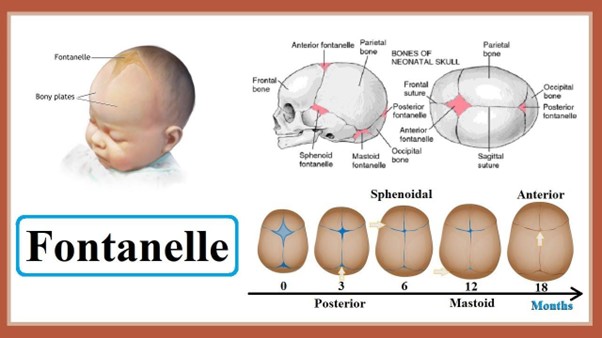A nurse is assessing a client who is in active labor.
Which of the following findings should the nurse report to the provider?
Early decelerations in the FHR.
Contractions lasting 80 seconds.
FHR baseline 170/min.
Temperature 37.4° C (99.3° F).
The Correct Answer is C
The correct answer is C. FHR baseline 170/min. This is because a normal FHR baseline is between 110 and 160 bpm, and anything above or below this range indicates fetal distress and should be reported to the provider. A FHR baseline of 170/min could indicate fetal tachycardia, which could be caused by maternal fever, infection, dehydration, fetal anemia, or fetal hypoxia.
Choice A is wrong because early decelerations in the FHR are normal and benign, and indicate head compression during contractions.
They do not require any intervention or reporting.
Choice B is wrong because contractions lasting 80 seconds are within the normal range for active labor, which is 40 to 90 seconds per contraction.
They do not indicate any complication or abnormality.
Choice D is wrong because a temperature of 37.4° C (99.3° F) is slightly elevated but not considered a fever. A fever is defined as a temperature of 38° C (100.4° F) or higher.
A mild increase in temperature could be due to dehydration, exertion, or environmental factors, and does not necessarily indicate infection or inflammation.
Nursing Test Bank
Naxlex Comprehensive Predictor Exams
Related Questions
Correct Answer is D
Explanation
The correct answer is D. Remind the client to use the incentive spirometer.
Choice A rationale:
Observing the position of the suspended weight is beyond the scope of practice for assistive personnel (AP). This task requires assessment skills to ensure proper alignment and functioning of the traction system, which is the responsibility of the nurse.
Choice B rationale:
Checking the client’s pedal pulse on the right leg involves assessment and clinical judgment to evaluate perfusion and detect potential complications such as impaired circulation. This is not a task that can be delegated to AP.
Choice C rationale:
Asking the client to describe her pain requires assessment and interpretation of subjective data, which falls under the nurse's scope of practice. Pain assessment is a critical nursing function.
Choice D rationale:
Reminding the client to use the incentive spirometer is a non-assessment task that involves reinforcing previously taught instructions. This is appropriate to delegate to assistive personnel, as it does not require clinical judgment.
Correct Answer is A
Explanation
Choice A reason
The anterior fontanel is open is the correct answer. An expected finding in an 8-month-old infant is that the anterior fontanel (the soft spot on the top of the baby's head) is open. The fontanelles are spaces between the bones of an infant's skull that allow for the baby's brain to grow and the skull to mould during birth.
The anterior fontanel typically remains open until the baby is around 18 to 24 months old, with the closure process starting sometime after 9 months of age. Therefore, at 8 months of age, it is normal for the anterior fontanel to still be open.
Choice B reason:
Both fontanels are the same size is incorrect. Both fontanels are usually not the same size. The anterior fontanel is larger and diamond-shaped, while the posterior fontanel is smaller and triangular.
Choice C reason:
The posterior fontanel is open is incorrect. The posterior fontanel, located at the back of the baby's head, usually closes earlier than the anterior fontanel. It typically closes within the first few months after birth, so it is not expected to be open at 8 months of age.
Choice D reason
Both fontanels show molding is incorrect. Molding refers to the temporary shaping of the baby's head during birth due to the pressure exerted during the passage through the birth canal. By 8 months of age, the molding typically resolves, and the baby's head should have a more rounded appearance.

Whether you are a student looking to ace your exams or a practicing nurse seeking to enhance your expertise , our nursing education contents will empower you with the confidence and competence to make a difference in the lives of patients and become a respected leader in the healthcare field.
Visit Naxlex, invest in your future and unlock endless possibilities with our unparalleled nursing education contents today
Report Wrong Answer on the Current Question
Do you disagree with the answer? If yes, what is your expected answer? Explain.
Kindly be descriptive with the issue you are facing.
